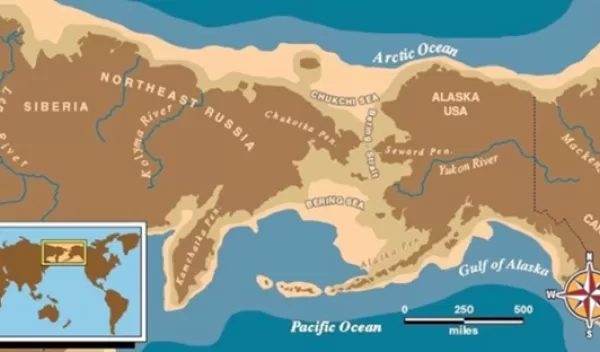
Bering Land Bridge formed surprisingly late during last ice age
A new study shows that the Bering Land Bridge, the strip of land that once connected Asia to Alaska, emerged far later during the last ice age than previously thought.
The unexpected findings shorten the window of time that humans could have first migrated from Asia to the Americas across the Bering Land Bridge.
The findings also indicate that there may be a less direct relationship between climate and global ice volume than scientists had thought, casting into doubt some explanations for the chain of events that causes ice age cycles. The U.S. National Science Foundation-supported study by scientists at Princeton University and other institutions was published in Proceedings of the National Academy of Sciences.
During the periodic ice ages over Earth's history, global sea levels dropped as more and more of Earth’s water became locked up in massive ice sheets. At the end of each ice age, as temperatures increased, ice sheets melted and sea levels rose. These ice age cycles have repeated throughout the last 3 million years of Earth's history, but their causes have been hard to pin down.
By reconstructing the history of the Arctic Ocean over the last 50,000 years, the researchers revealed that the growth of the ice sheets — and the resulting drop in sea level — occurred surprisingly quickly and much later in the last glacial cycle than previous studies had suggested.
During the peak of the last ice age, known as the Last Glacial Maximum, the low sea levels exposed a vast land area that extended between Siberia and Alaska known as Beringia, which included the Bering Land Bridge. In its place today is a passage of water known as the Bering Strait, which connects the Pacific and Arctic Oceans.
Based on records of estimated global temperature and sea level, scientists thought the Bering Land Bridge emerged around 70,000 years ago, long before the Last Glacial Maximum. But the new data show that sea levels became low enough for the land bridge to appear only 35,700 years ago.
"This study clearly shows that geochemistry can be used to narrow down the window when humans migrated to North America across the Bering Land Bridge," says Gail Christeson, a program director in NSF's Division of Ocean Sciences.
